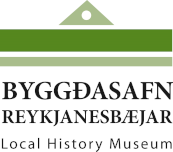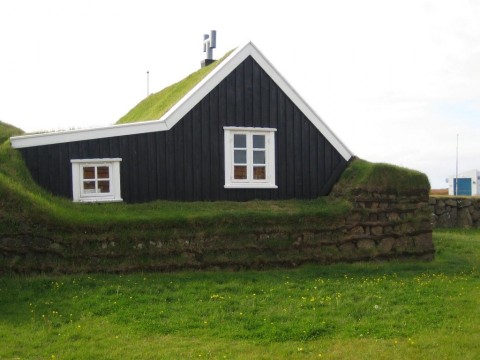Stekkjarkot
A classic example of the roughly built turf, stone and timber cottage-type houses once common on the Reykjanes peninsula and other coastal areas of Iceland, Stekkjarkot was opened to the public in 1993 by Iceland’s then-president Vigdís Finnbogadóttir, following a year of restorations carried out as part of the 50th anniversary celebrations to mark the incorporation of the town of Njarðvík.
The parcel of land on which the house stands was of the type known in Icelandic as þurrabúð, which meant that its occupants were forbidden from keeping any kind of domestic animals, including cows and sheep. As a result, they were completely dependent on the sea for their existence. Crofts of this type were built on land belonging to others, and their tenants paid the landlord rent for whatever fish or other produce they managed to catch or gather from the sea.
Despite the harsh conditions faced by those who lived in them, however, small crofts like Stekkjarkot formed the core of what would later become permanent settlements both in Reykjanes and at several other places around Iceland’s coasts, although these did not begin to take shape until the latter half of the 19th century and early part of the 20th.
Following its restoration, Stekkjarkot provides a telling insight into how houses of this type looked. Its history as a domestic dwelling is patchy, and during the 37 years it was inhabited it was only ever occupied by three couples and their families. Built during the years 1855-1857, it was abandoned only 30 years later. Although refurbished in 1917, by 1924 it had been abandoned once again. The high point of its history as a farm probably came in 1921, when its tenants finally managed to gain permission to keep a few sheep, and the cottage as it stands today was restored according to the recollections of one of its last occupants.
The older part of the cottage, with its open hearth, dates back to the 19th century, and is said to have been home to a maidservant with an infant daughter who slept on the earthen floor. The newer part dates from the farm’s last days of habitation, by which time floorboards covered the living room and kitchen, a coal-fired stove provided both cooking facilities and heat, and conditions for those who lived there do not seem to have been too bad.
While the story of Stekkjarkot and those to whom it was once home may not be a long one, it provides us with a fascinating insight into a bygone era, and the twilight years of the many houses of this type which once dotted Iceland’s coastline.
Stekkjarkot is cared for by the Reykjanes Local History Museum. Open on request, booking tel. 865 6160

